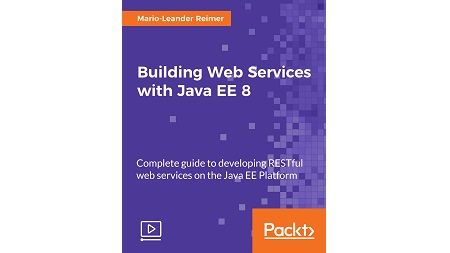
English | MP4 | AVC 1920×1080 | AAC 48KHz 2ch | 2h 06m | 702 MB
Create modern RESTful web services with the Java EE 8 API
The Java Enterprise Edition is one of the leading application programming platforms for enterprise Java development. With Java EE 8 finally released and the first application servers being available, it is time to have a closer look at how to develop modern and lightweight web services with the latest API additions and improvements.
This video course is a comprehensive guide showing you how to develop state-of-the-art RESTful web services with the latest Java EE 8 APIs. We start by giving an overview of Java EE 8 and the latest API additions and improvements. Then you will implement, build, and package your first working web service as a prototype for the remainder of the course. Then you will delve into the details of implementing synchronous RESTful web services and clients with JAX-RS. Next up, you will learn about the specifics of data binding and content marshalling using the JSON-B 1.0 and JSON-P 1.1 APIs. Then you will learn how to leverage the power of asynchronous APIs on the server- and client-side, and you will learn to use Server-Sent-Events (SSEs) for push communications. The final section will cover some advanced web service topics such as validation, JWT security, and diagnosability.
By the end of this course, you will have a thorough understanding of the Java EE 8 APIs required for lightweight web service development. Also, you will have implemented several working web services to provide you with the required practical experience.
This course on using the latest Java EE 8 APIs is packed with step-by-step instructions and examples that are directly applicable in practice. The different sections of this course will focus on important topics when developing web services with Java EE 8.
What You Will Learn
- Dive into latest Java EE 8 APIs relevant for developing web services
- Understand the basics of building synchronous web services with JAX-RS
- Easy content marshaling with JSON-B 1.0
- Flexible JSON processing with JSON-P 1.1
- Implement asynchronous web services with JAX-RS
- Implement synchronous and asynchronous JAX-RS clients
- Use Server-Sent Events (SSE)
- Secure Java EE 8 web services with JSON web tokens
Table of Contents
01 The Course Overview
02 Why Is Java EE a Good Platform for Microservices
03 What’s New in Java EE 8
04 Getting Started with Java EE 8 Microservices
05 Containerizing Java EE 8 Microservices
06 Implementing Basic REST APIs with JAX-RS
07 Using Sub-Resources
08 Error Handling in JAX-RS
09 Implementing Web Service Clients with Java EE 8
10 Testing Java EE 8 Web Services
11 Introduction to Content-Types and Content Negotiation
12 Easy Data Binding Using JSON-B
13 Flexible JSON Processing with JSON-P
14 Implementing Hypermedia-Driven REST APIs
15 Benefits and Usage Scenarios of Asynchronous Processing
16 Implementing Asynchronous Web Services
17 Using ManagedExecutorService and Server-Side Callbacks
18 Implementing Asynchronous Web Service Clients
19 What Are Server-Sent Events
20 Implementing SSE on the Server-Side
21 Implementing SSE REST Clients
22 Implementing and Sending SSE Broadcasts
23 Apply Design by Contract – Adding Validation
24 Using JSON Web Token (JWT) for Authentication
25 Diagnosability – Logging, Metrics, and Tracing
Resolve the captcha to access the links!